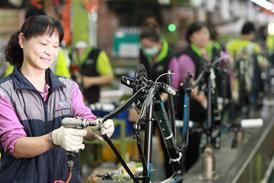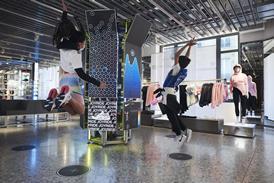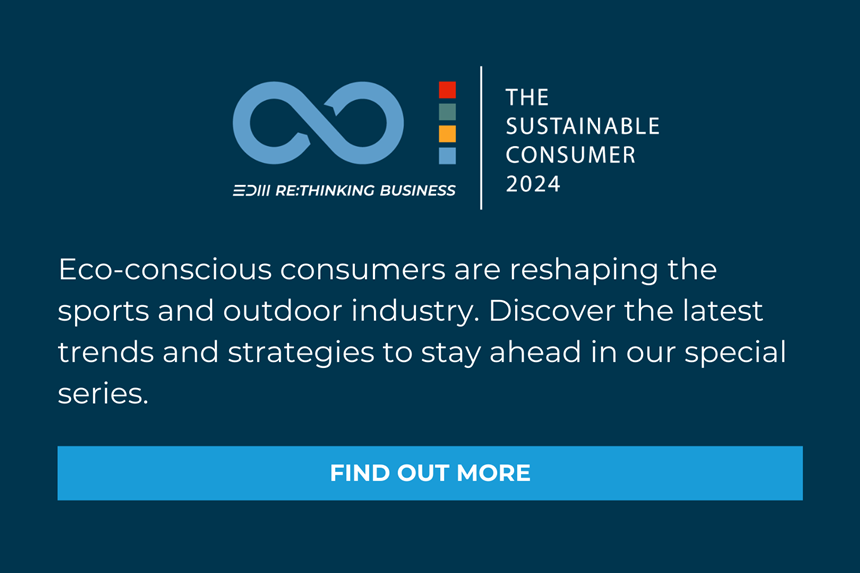Nemo Equipment, the New Hampshire-based outdoor gear company, is driven by product innovation and the design philosophy is a vital part of the brand. In this exclusive interview with Nemo’s Director of Sustainability and Government Affairs, Theresa McKenney, and founder and CEO Cam Brensinger we dive into the intersection of innovation, eco-consciousness, and consumer-centricity
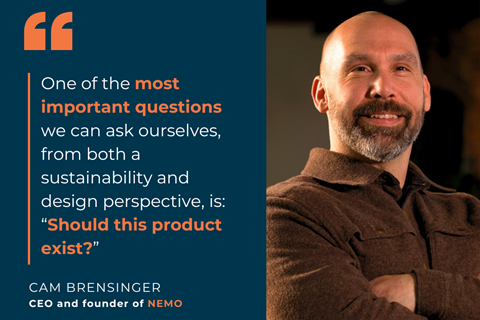
Your design philosophy is to never bring anything to market that doesn’t offer a meaningfully better experience. How closely related is that to your sustainability efforts?
Cam Brensinger: Nemo’s design philosophy and sustainability efforts go hand in hand. 87% of our greenhouse gas emissions happen before our product leaves the factory. One of the most important questions we can ask ourselves, from both a sustainability and design perspective, is: “Should this product exist?” If the answer is yes, then we work towards building a product that meets and exceeds our performance and sustainability expectations.
Would it be possible to be the company who you are without that design philosophy?
Nemo’s design philosophy is a vital part of our brand story. Innovative design is core to who we are. You can see the results of our design focus throughout our line; Spoon® shape bags, chairs that swing and recline, and our fully circular Endless Promise® line.
Nemo CEO Cam Brensinger: “We need to serve a purpose”
How do you integrate consumer-centricity into that triangle of innovation and being eco-conscious?
Performance and quality are our top priority. If we are going to use resources to bring a product into the world, we need to ensure that it’s meeting customer needs and serving a purpose. If a product isn’t performing for the customer, it’s not a truly sustainable product.
How do you convince new consumers to buy your products because it is not only super-innovative and top-notch but also the better choice for environment and social responsibility? On the other hand, new products mean more consumption more GHG emissions etc…
We lead with design innovation. Our new backpack line features groundbreaking materials that were first sourced to meet our sustainability goals but are better performing than their traditional counterparts. For example, the innovative CCubed™ cushioning is not only a recyclable alternative to foam, but also extremely comfortable and moisture-wicking. While all our packs were designed with circularity in mind and have vetted pathways for repair, resale, and recycling, they are first and foremost exceptional adventure products, leading in both performance and sustainability.

Nemo with in-house marketing
What is your overall strategy to spread the word of an eco-conscious company that wants to enable everybody to go outside?
As a product-led company, we’ve historically let our designs speak for themselves, but sustainability efforts are complex and often brand-new to the customer so informative marketing is especially important. Much like Nemo itself, our Marketing Team takes a scrappy approach and makes the most of content we can create in-house and share via any touchpoints the customer might have while shopping for our products: in-depth product detail pages, informative packaging materials, and additional content for the discerning consumer with a lot of questions. We’re lucky to have dealer partners that amplify our content and are slowly growing our audience through strategic relationships with other companies and ambassadors. Our focus is on meaningful — not instantaneous — growth, with an emphasis on content rich in quality, not quantity.
Theresa, at least when I remember your talk at Outdoor by ISPO and look at your LinkedIN profile it seems to me that sustainability / ESG topics became more and more important in your CV ans also in the company’s story. Can you tell us a bit about it?
Theresa McKenney: Nemo has a long history of prioritizing sustainability work, going all the way back to the early days of our brand. One of our first sustainability projects was the launch of Ditto, a line of reclaimed fabric wallets and tote bags. NEMO has been steadily investing in sustainability over the past decade and has made meaningful progress; we set a greenhouse gas reduction target, we launched a fully circular product line, we developed the first bluesign® Product sleeping pad. Today, we’re seeing regulatory trends that push not only NEMO, but our entire industry, to continue to improve.
Theresa McKenney: “The Outdoor Industry has a lot of opportunities”
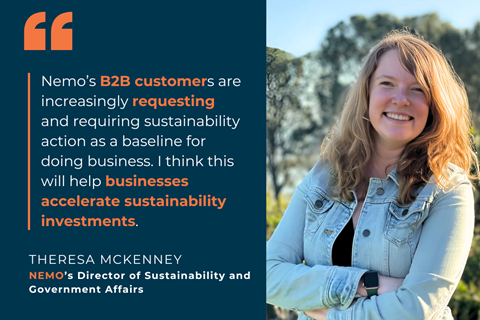
How closely influenced the perspective of the consumer this development?
It’s hard to parse out what drives trends; customer sentiment, market conditions, and geopolitics all play a role. One thing that is clear is that Nemo’s B2B customers are increasingly requesting and requiring sustainability action as a baseline for doing business. I think this will help businesses accelerate sustainability investments.
Nemo supports a lot of industry lobby organizations for the better. How important is that from a consumer perspective?
Outdoor product consumers are part of one of the largest economic engines in the United States. The outdoor recreation economy contributes $1.1 trillion to U.S. GDP annually, putting it at a similar level to mining, oil and gas, and pharmaceuticals. The outdoor recreation economy has been measured for less than a decade, so our industry has a lot of opportunity to stand up for what we believe in: meaningful climate action, outdoor access and inclusion, and public lands protection.
Is your brand ready for the sustainable consumer?
Eco-conscious consumers are reshaping the sports and outdoor industry. Discover the latest trends and strategies to stay ahead in our special series.
>> Find out more
